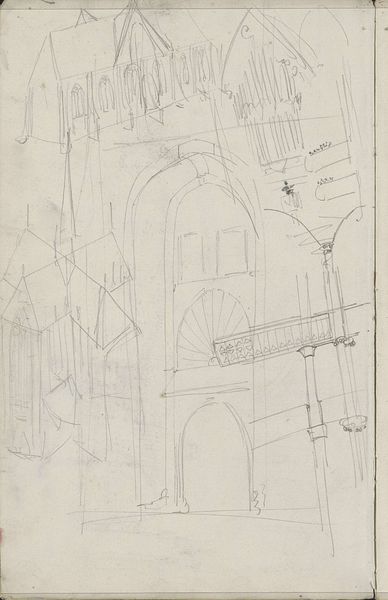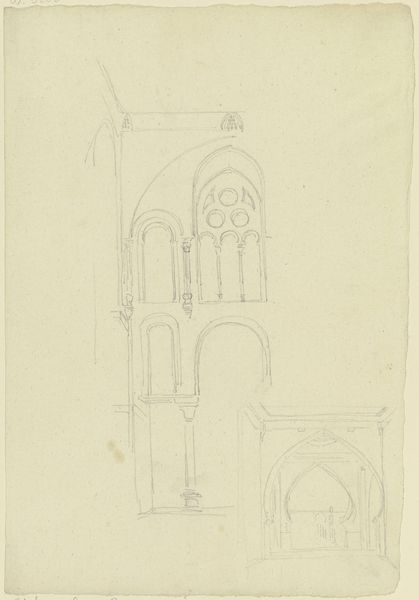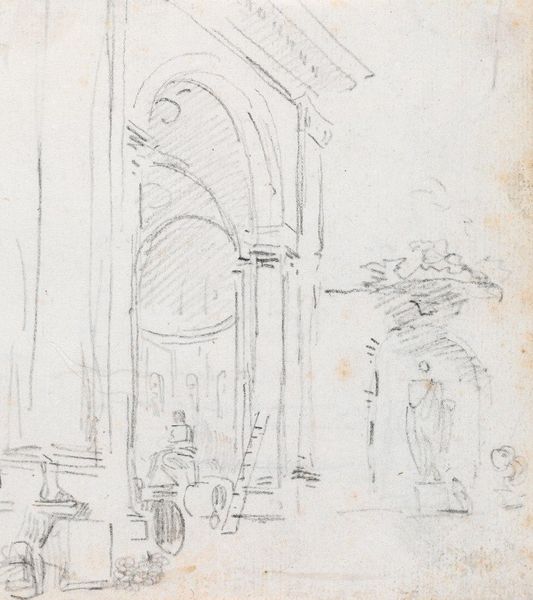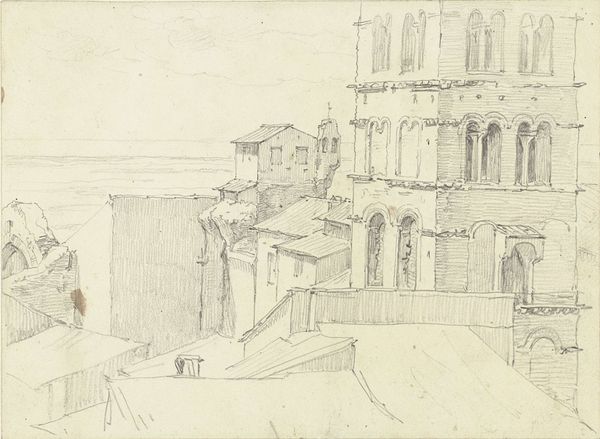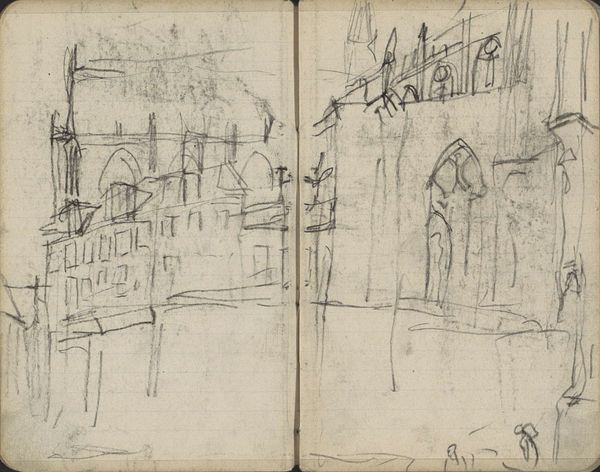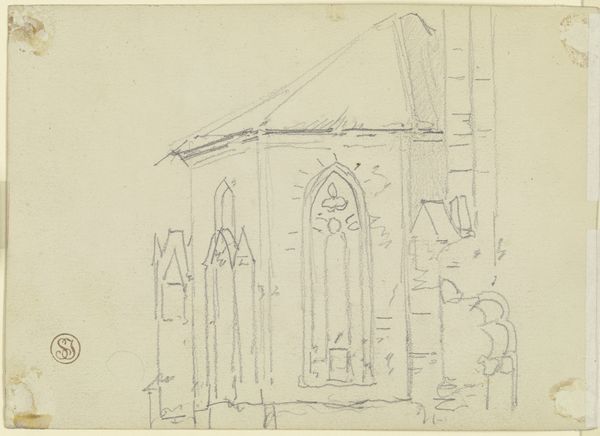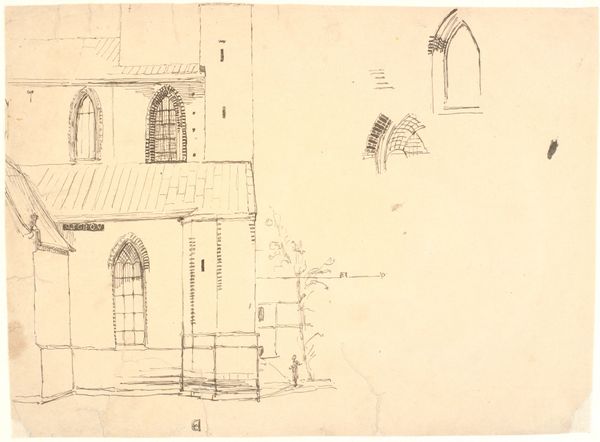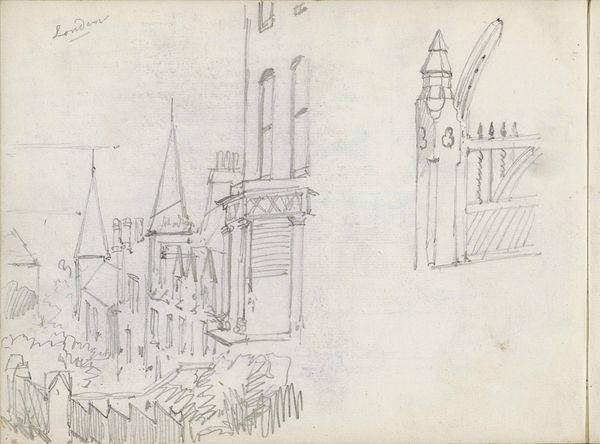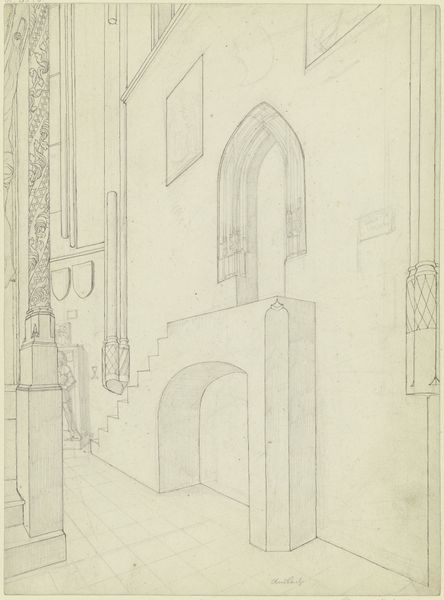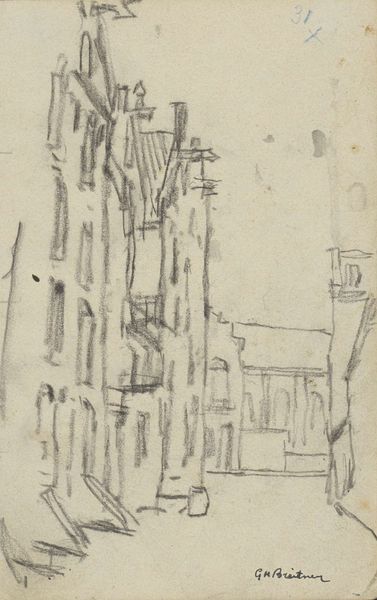
Dimensions: height 105 mm, width 166 mm
Copyright: Rijks Museum: Open Domain
Editor: This is George Hendrik Breitner's "View of the Nieuwe Kerk in Amsterdam," a pencil drawing from 1897, currently housed in the Rijksmuseum. It has the feeling of a preliminary sketch. The lines are sparse, almost skeletal. I'm curious, what strikes you about it? Curator: Well, as a materialist, I see the drawing not just as a representation of the church, but as a record of labor and production. Consider the choice of pencil, a relatively inexpensive and readily available tool, suggesting a democratic approach to artmaking. Editor: That's interesting! So, you see significance even in the materials used? Curator: Absolutely! Look at the aged paper itself. It speaks to the passage of time, but also to the material constraints Breitner might have faced. Was he using scraps? Was this a quick study done on readily available material? It prompts us to consider the economic context. Editor: I hadn't considered that. The "amateur sketch" tag made me think more about it being a personal study, but I see what you mean about the economics. Curator: Furthermore, notice the lack of precise detail. Breitner seems less concerned with capturing the exact architectural features and more interested in the essence of the structure. The quick strokes point to an immediacy, a desire to capture a fleeting moment. Editor: Almost like impressionism, where the feel of the moment is as important as reality? Curator: Yes! And how that 'feel' translates into labor – the very act of rapidly transferring the scene onto paper becomes a key aspect of the work’s meaning. The looseness, it moves away from traditional artistic labor and opens itself to the burgeoning sense of photography and quick reproduction of reality that was part of the era. Editor: This is great, so the context and means of creating it are just as valuable to understanding the piece. Curator: Exactly! Examining the materiality and means of production allows us to challenge traditional art historical boundaries. This sketch ceases to be simply a preparatory drawing, but becomes a compelling social document. Editor: That's a totally different lens than I normally use. Thanks for expanding my view!
Comments
No comments
Be the first to comment and join the conversation on the ultimate creative platform.
